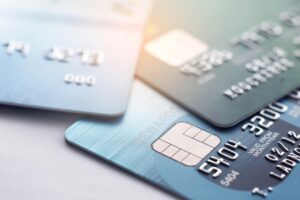Whether it’s to buy a home, start a business, or just manage extra expenses, sometimes you need to borrow money from a financial institution. There are essentially two ways to do it: a loan, or a line of credit. Of course, each of them can take a number of different forms, depending on who’s borrowing and what they need the money for. So, what’s the difference between a loan and a line of credit? Here’s what you need to know.

Loan
A loan is when you borrow money, typically from a bank or credit union, in one lump sum. Then, you pay the money back, generally with monthly payments, over a pre-specified period of time, with interest. Loans can be either secured or unsecured.
A secured loan involves collateral—e.g. a home loan or car loan. If you borrow money to buy a house, the house acts as an assurance to the lender that they’ll be paid back, one way or another. If you don’t make the payments, the lender has the right to take possession of anything that secures the loan to satisfy the obligation.
You can also take out a loan secured by a home that you already own. If you need money for something else, such as extensive home repairs and renovations, you can take out a second mortgage. The rules, however, remain the same. If you don’t pay the loan, you could end up in a foreclosure situation so it is very important realize that any time you borrow against your home there is a certain amount of risk associated the transaction.
An unsecured loan has no collateral. One of the most common examples is student loans. Because there’s nothing for the lender to repossess if you don’t pay it back, the interest rates tend to be significantly higher as a result of the higher risk.
Line of Credit
A line of credit, rather than paying you a single lump sum, gives you access to a certain amount of money to be used over a given period of time. Instead of repaying the full sum over that time, you only pay for the amount you spend. Then, once you’ve repaid it, you can spend it again.
Take a credit card, for example. Say you have a card with a $5,000 limit. This month, you spend $300. You have $4,700 of credit left. But then, at the end of the month, you pay off the entire $300, plus whatever interest has accrued. Now you have $5,000 of credit again. And if the following month you don’t spend anything, you won’t owe anything either.
Like loans, there are secured and unsecured lines of credit. A credit card is unsecured. Therefore, it typically has a higher interest rate, and requires a higher credit score to obtain. You can also get a secured line of credit, such as a Home Equity Line of Credit (HELOC) which is secured by your home.
Just like with a home loan, your house is your collateral, and a line of credit is established based on the value of your home, which you then use, pay back, and use again over a given period of time (generally up to 10 years), as needed. A HELOC can typically be up to 80% of your home’s value, though if you still have a mortgage, the amount you still owe will be factored in, and the amount of credit you can get will be reduced accordingly.
This is just the tip of the iceberg when it comes to loans and lines of credit. There’s a lot more that you can do with each—and a lot more to understand about getting approved, repayment, etc. Don’t go in unaware. Get the facts about different ways to borrow money, know the different risks and advantages, and figure out which one is best for your needs. Contact the team at Firefighters Credit Union today to learn more about which is right for you – 608-784-9480


